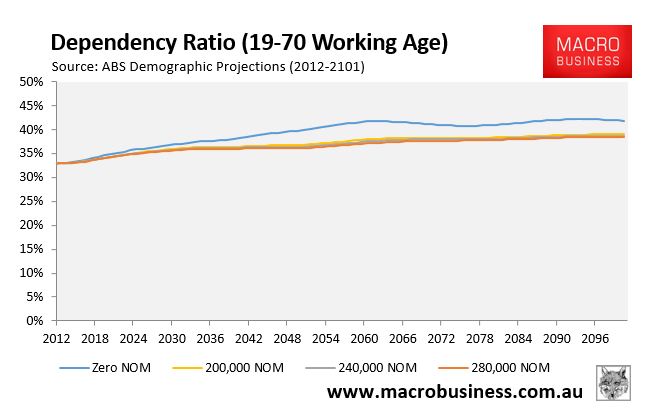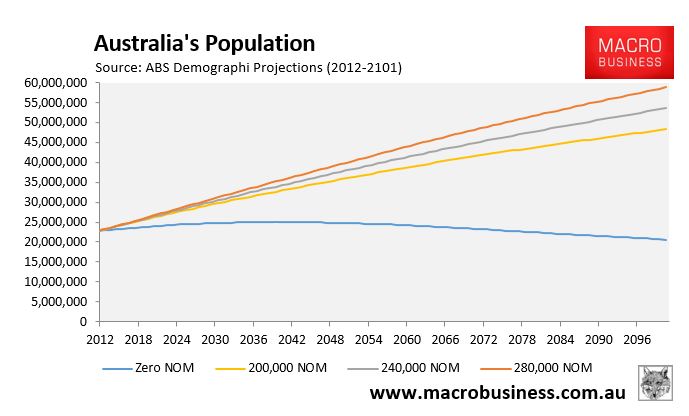Ivailo Izvorski – Lead Economist, Global Practice Macroeconomics at the World Bank – has penned a ripping article debunking the mainstream view that population ageing spells doom for the world’s economies:
Longer and more productive lives should be celebrated as an achievement of mankind rather than considered a problem. Longevity, however, does require personal and societal adjustments. In many advanced and developing economies, individuals are already adjusting to aging by working longer and upgrading their skills throughout their lifetimes. Companies are also making a change by accommodating older workers and redefining their roles. Will governments raise their game and make the necessary adjustments to support healthier and productive aging?…
The “traditional view” assumes no changes to the structure of production, technology, productivity, or labor force participation, and concludes, reasonably under such restrictive assumptions, that aging will exert downward pressure on total output and returns to capital—keeping real GDP growth low…
Many of the assumptions of the traditional view are extreme. Consider living standards that, in general, depend on four main factors: the state of technology, the dependency rate (in this case, the ratio of older people to people of working age), the share of the working population, and labor productivity. Production and technology have changed rapidly during the last century and will likely continue to change for decades. In fact, technology’s rapid change has given rise to worries that automation will replace predictable and routine jobs—or even put most of us out of work.
With dependency rates, the concern has been that with unchanged technology and a shrinking workforce, per capita output will go down. Dependency rates are not predetermined, however, and neither must the workforce shrink. Younger people, women, and older people are helping the labor force participation rise in many parts of the world…
With productivity, if older workers are less productive, output per worker will go down. For example, a recent study estimates that an increase in the share of older workers by 1 percent is associated with a reduction in annual productivity by 0.2-0.6 percent in Europe and the U.S. However, empirical studies of teams of younger and older workers demonstrate that productivity need not decline with age. Moreover, “teams of young people make fewer mistakes than teams of older people [in automotive production]. But when the former team makes a mistake, it takes longer to fix it than the latter.” In other words, older people leverage their experience: They know the shortcuts, even if younger people “run faster.”
Ivailo Izvorski’s view mirrors almost perfectly the arguments Dr Cameron Murray and I put forward in our research paper Three Economic Myths about Ageing: Participation, Immigration and Infrastructure, which was commissioned by Sustainable Australia and released last month.
In Australia’s case, the population is unambiguously ageing, due to Australian’s living longer (a good thing), as well as the mass immigration program ran in the post-war period (i.e. 1950s and 1960s):

These migrants (which include my parents) have now grown old, thus adding to Australia’s current ‘ageing problem’.
Therefore, the common policy response to run a strong immigration program to counter population ageing is misguided, because today’s migrants will also grow old, thus creating further ageing ‘problems’ in 40 year’s time.
Furthermore, the standard rigid definition of 15-64 years old for the working-aged population ignores the increasing labour force participation by older Australians:

Since the mid-2000s, the labour force participation rate of over-65s has more than doubled. And there is obviously further scope for increases in participation given older Australians are remaining healthier for longer, as well as the legislated lift in Australia’s pension eligibility age to 67 by 2023.
Regardless, the ABS’ own demographic projections show that immigration is next to useless in ‘younging’ Australia’s population. That is, if we apply a more realistic definition for the working aged population of 19 to 70 (given more kids are staying in school and older Australians are working longer), then running annual net overseas migration (NOM) of 200,000 to 280,000 delivers only 3% more working-aged Australians by 2101 than zero NOM:

This tiny ‘benefit’ will only be transitory and comes at the expense of adding 150% to 200% more people to Australia’s population versus zero NOM:

Such a massive increase in population will obviously take a massive toll on Australia’s natural environment and general liveability.
It’s time to put the ageing economic myth to bed once and for all.

